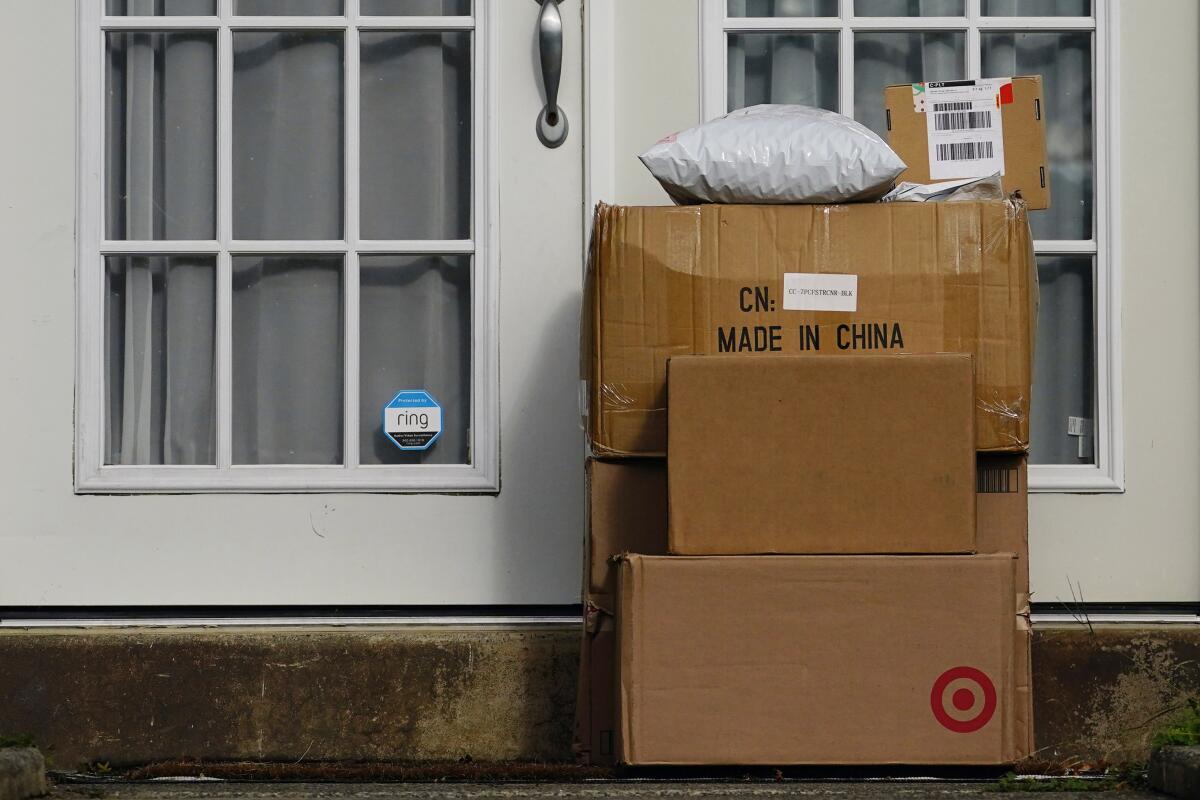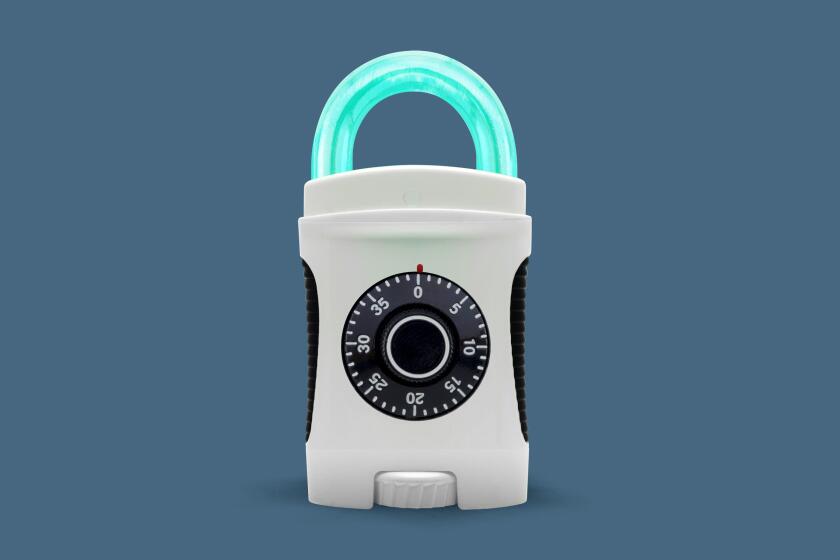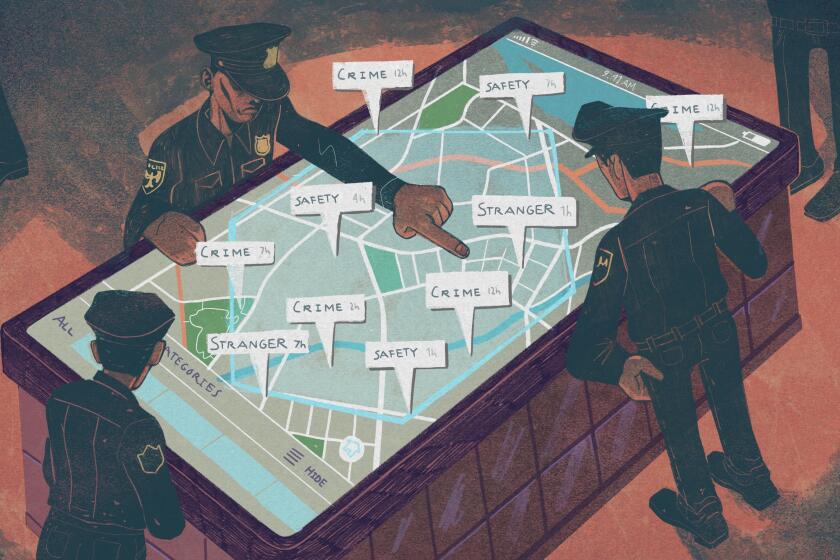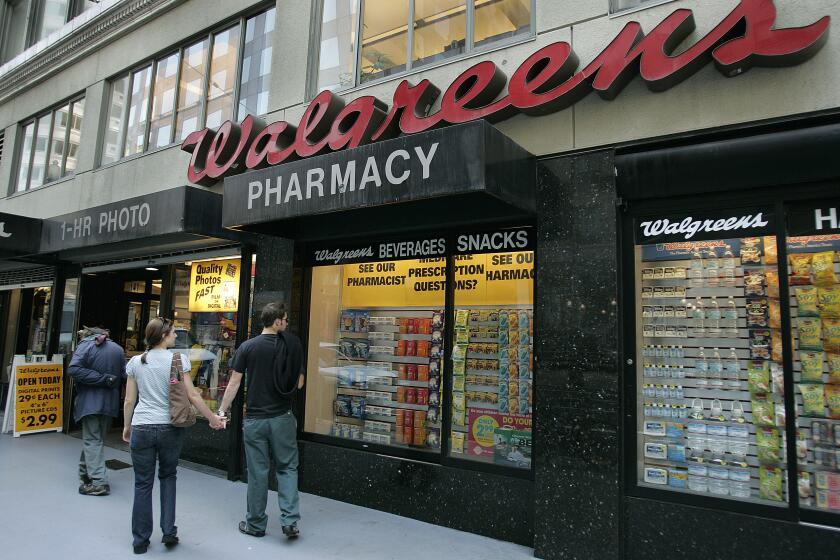With ‘Prime Day’ here, tips for protecting your packages from porch pirates

- Share via
Amazon’s annual sale has started, which means even more impulsive purchases will be packaged and dropped onto porches across the state this week.
Some of those parcels won’t make it into the buyer’s home, however. That’s because package theft is commonplace in California, as well as the rest of the United States.
According to estimates compiled by Capital One, 119 million packages were stolen in 2023 — a big number, although it represents only about 0.5% of the 21.7 billion shipments in the U.S. that year.
For the record:
11:17 a.m. July 16, 2024A previous version of this article attributed research on package theft to Security.com. The organization is Security.org.
With Americans receiving multiple packages per week on average, the odds eventually catch up to many consumers. According to Security.org, 44% of those surveyed last year said they’d had a package stolen at some point.
In California, 1 in 5 people have at least one package stolen every year, Capital One estimated. That makes them a bit more likely to be victimized than other Americans, but their average loss — $40 — is lower than the typical loss for all U.S. consumers, which Security.org put at roughly $50.
The best defense against package theft is also the least practical one: Be at your door when the delivery person arrives. Short of that, Amazon and other delivery services offer options that are more secure than your porch.
If you do fall victim to package theft, you have a number of different routes to a refund. None of them are guaranteed, however.
Here are answers to some common questions about porch piracy and tips for how to avoid it.
Security glass once locked up electronics, Sudafed and a few other items. But stores have gotten more aggressive in efforts to confront retail theft.
If my package is stolen, how do I get a refund?
Under normal circumstances, no one is legally obligated to cover your losses to porch pirates. One exception would be when the delivery company is responsible for the loss — for example, when the package is stolen by the driver or delivered to the wrong address.
Some retailers will refund your money to keep you happy, and you may be able to wrangle a refund from the delivery company, especially if the package had been insured. Whatever route you take, you’ll have to jump through some hoops.
Step 1 is determining that the package has actually been delivered. You can (and should) enroll in services from the U.S. Postal Service, UPS and FedEx that let you to track all the packages they’re delivering to your home. In many cases, the services can send you a text as soon as your package arrives.
Be forewarned that the notifications are not 100% accurate; drivers will occasional mark a package delivered prematurely, then bring it to your doorstep a day or two later. Amazon advises people to wait two days before concluding that the “delivered” package has definitely been delivered — and taken.
Don’t assume that a package has been stolen just because it’s not at your front door. Different drivers use different techniques to deter porch pirates, so make sure to look around your property in case the driver found a drop-off spot that was easy to reach but out of sight.
Step 2 is filing a police report. You probably won’t get the “Law & Order” treatment of your lost item; you’re filing a report mainly to create a public record (and because some sellers require it), not to launch an investigation.
Step 3 is contacting the seller. If you ordered from Amazon, the seller often turns out to be a third party selling through Amazon’s Marketplace. How the seller responds will vary. Some will file a claim with the delivery company for the insured value of the package, then use the proceeds to make a refund. Others may simply tell you that it’s your problem to solve.
Accidentally sealed in an box filled with steel-toed work boots, a Utah cat traveled to a warehouse in Riverside.
Amazon has a reputation for making refunds when items are stolen after Amazon delivers them, especially when the items are from third-party sellers covered by the company’s “A-to-z Guarantee.” But there’s no blanket promise of refunds.
“While the vast majority of deliveries make it to customers without issue, we recognize package theft is a reality all delivery companies contend with, especially during busy times of year,” said Montana MacLachlan, an Amazon spokesperson. “We encourage anyone who’s been a victim of theft to report the crime to law enforcement and notify Amazon’s Customer Service team so we can provide any assistance possible.”
If Step 3 fails, Step 4 is filing a claim with the company that delivered the package — you can do so through its website, and you typically have to file it within 60 days of the scheduled delivery date. You’ll need to provide a receipt, invoice or other proof of the item’s value.
Although FedEx, UPS and other delivery companies pledge to investigate claims, they don’t promise refunds. Packages are routinely insured for up to $100 by FedEx and UPS unless the shipper pays for more insurance, so even if your claim is approved, whether you recover the full value could depend on whether the shipper bought extra insurance. Also, if UPS approves a claim, it typically pays the shipper, not you, so you’ll have to rely on the shipper to reimburse you for your loss.
Your homeowner’s or renter’s insurance covers stolen packages, but chances are your deductible is greater than the value of the sweater or Instant Pot taken from your porch. If you paid for the item with a credit card, you may have a better option: Visa, Mastercard and American Express all offer a form of insurance that covers theft losses, with limits on the types of items and amount of loss covered. You can submit a claim through the relevant card’s website.
Anaheim police tracking a GPS ‘bait package’ to look for thieves came upon a one-car wreck with two injured people inside. One died.
How do I prevent my packages from being stolen?
Delivery companies offer a number of ways to protect your deliveries. The most straightforward (but least convenient) one is having your package delivered to one of the company’s retail outlets or partners, then picking it up from there.
Amazon has self-service lockers at thousands of retailers, groceries, pharmacies and convenience stores across the country. You can search for one near you on Amazon’s website.
UPS allows users of its My Choice service to have all their deliveries made to a nearby UPS Store outlet or retail partner at no extra charge. If they want to change the delivery of just one package, UPS charges a $6 fee unless the customer has a My Choice Premium membership, which costs $20 a year. To select an alternative location, sign into your My Choice account and follow the prompts under Delivery Preferences. To pick up a package there, you’ll need to present an ID that shows an address that matches the one on the shipping label.
Los Angeles police officers can receive dozens of emails per day from Neighbors, a social network for owners of Amazon Ring cameras. What are they doing with all that data?
FedEx offers to hold your packages for up to seven days at one of its retail partners, including FedEx Office locations, Walgreens, Office Depot and Dollar General. You can search for a location on the FedEx website.
For no additional charge, you can arrange for all of your deliveries to go to an alternative location, or just set them one at a time. You’ll pick the package up by showing a government-issued photo ID and proof of address, or you can provide a QR code to someone else so they can pick it up for you.
To get started on the FedEx site, either log into you FedEx Delivery Manager account or enter the tracking number for the package you’re expecting.
Alternatively, all three of those companies allow you to redirect a package to a neighbor you know will be home to receive the delivery. They also allow you to specify potentially safer spots on your property or in your building for packages to be dropped off. And if you’re away on vacation, UPS and FedEx allows you to delay your deliveries for one to two weeks.
Amazon offers another option in certain parts of the country if you’re enrolled in Amazon Prime and have an internet-connected garage door opener: Its drivers can deliver packages inside your garage. Going this route, however, requires you to give Amazon the ability to open your garage, which will be encoded into the label on your package for one-time use. It’s a leap of faith, although the company says it has a number of safeguards, such as verifying “the driver, package and package location via multi-step authentication before granting them temporary, one-time access to your garage.”
Inconsistent information makes it difficult for California lawmakers to draft proposed laws to combat retail theft.
When ordering something online, try to have the shipper require a signature for delivery. You won’t be given that option often, though; it’s typically used to protect expensive items, such as laptop computers.
Some security consultants recommend installing a security camera or a doorbell with a built-in webcam, which can record porch thieves in the act. That may help you obtain a refund from the shipper; whether it will drive off thieves is another story. One study found that security cameras had a “modest but significant effect” on crime rates, leading to a roughly 13% decrease. But there’s not a lot of data from published studies that suggest doorbell cameras deter porch pirates.
Some less conventional solutions have found their way onto the market as well.
Parcel Vault sells a kit that can put a package door in your wall so packages can be dropped inside your home (it also sells full-size doors with built-in package doors). And Package Guard sells a Frisbee-sized, internet-connected device that you place on your porch to receive packages; it sends you an alert when deliveries are placed on it, and it emits a loud alarm if they are removed without your authorization.
More to Read
Inside the business of entertainment
The Wide Shot brings you news, analysis and insights on everything from streaming wars to production — and what it all means for the future.
You may occasionally receive promotional content from the Los Angeles Times.
















